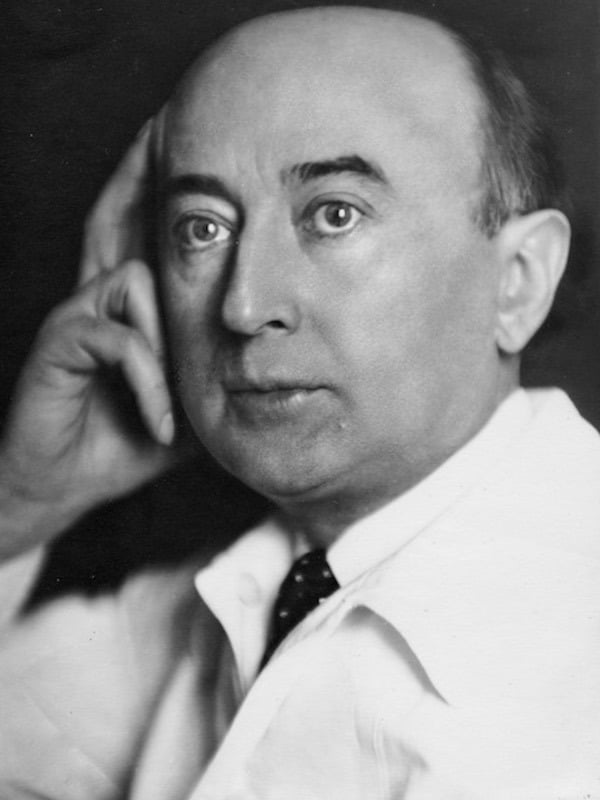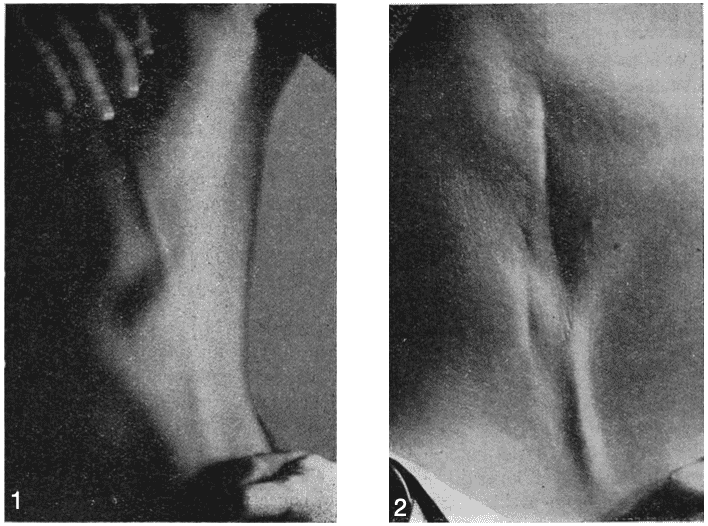Henri Mondor

Henri Mondor (1885-1962) was a French physician, surgeon, historian and biographer.
Mondor was among the first surgeons to emphasize that the mortality rate decreases when the interval between perforation and surgical closure is shortened. He wrote many articles on cancer of the rectum, perforation of viscera, gynecologic operations, and the value of roentgenography in emergency surgical procedures.
Mondor was co-editor of the Journal de Chirurgie and La Presse Médicale. His expertise in teaching anatomy and surgical symptomatology led to his appointment as professor of surgical pathology and clinical professor of surgery at the Pitié-Salpêtrière University Hospital.
He is most famous, however, as a biographer. His medical biographies of Guillaume Dupuytren, René Leriche and Louis Pasteur were well received. He published more than twenty-five books on the history of literature including the French poets Stéphane Mallarmé and Paul Valéry.
Henri Mondor is eponymously remembered for his description of thrombophlebitis of the thoracoepigastric vein (Mondor’s disease).
Biography
- Born on May 20, 1885
- 1903 – Enrolled la faculté de médecine de Paris
- 1909 – MD faculté de médecine de Paris; anatomist à la faculté de médecine de Paris
- 1912 – Gold medal for surgery in 1912 and he defended his thesis at the Faculty of Medicine of Paris entitled Contribution to the study of rectal cancer under the direction of Henri Albert Hartmann (1860-1952)
- 1914-1918 During the First World War, he was first an auxiliary doctor and then a major assistant doctor on several fronts (Soissons, Verdun, Italy, Champagne)
- 1923 – Associate professor
- 1932 – Chef de service à l’hôpital Broussais and à l’hôpital Bichat (1933)
- 1939 – Secrétaire général de l’Académie de chirurgie
- 1945 – Member of the Académie Nationale de Médecine
- Member of 4 academies: l’Académie de chirurgie (1926); l’Académie nationale de médecine (1945); l’Académie française (1946); l’Académie des sciences (1961)
- Died on April 6, 1962 at the American Hospital in Neuilly
Medical Eponyms
Mondor disease (1939)
Mondor disease is a rare, benign condition characterized by thrombophlebitis of the subcutaneous veins of the breast and anterolateral chest wall. Patients usually present with a painful breast (cord-like) mass. There may be overlying skin erythema. It may be accentuated when the ipsilateral arm is raised.
During the session of the Academy of Surgery on December 6, 1939, Henri Mondor described a clinical entity of which it was impossible “to give a precise name”. He provided the title of “Subacute subcutaneous tronculitis of the anterolateral chest wall“
His work was based on four observations, but he described more precisely the case of a 30-year-old woman referred by her attending physician for a “small hard cord under the left breast” which occurred “following a fall on the edge of a crate“.
En relevant un gros sein tombant de femme grasse et en tendant ainsi de bas en haut les
téguments de la région sous-mammaire, on voit se dessiner, nettement, sur la paroi thoracique une sorte de relief linéaire qui descend à peu près verticalement, sur 20 à 25 centimètres environ de longueur, allant du sein au rebord costal inférieur. À la palpation, on sent un cordon induré de 2 à 3 millimètres de diamètre qui fait sous le doigt la saillie d’un petit crayon; ce cordon est à peine douloureux, il donne la sensation que donnerait, avec son diamètre approximatif et à peu près sa consistance, une sonde urétérale, ou mieux une plume d’oie fixée, faufilée sous la peau et au plus près de celle-ci.
By raising a large drooping breast of a fat woman and thus stretching from bottom to top the integuments of the sub-mammary region, one sees clearly emerging on the chest wall a kind of linear relief which descends almost vertically, about 20 to 25 centimeters in length, going from the breast to the lower costal edge. On palpation, one feels a hard cord 2 to 3 millimeters in diameter which protrudes under the finger like a small pencil; this cord is barely painful, it gives the sensation that, with its approximate diameter and roughly its consistency, a ureteral catheter would give, or better a fixed goose feather, threaded under the skin and as close as possible to it .

(1) Tronculite de la paroi thoracique antéro-latérale gauche. (2) Tronculite subaiguë de la paroi thoracique. Mondor 1939
1951 – In his publication Thrombophlebites and periphlebites of the anterior chest wall, Mondor, gave a more detailed study of this disease which he called his “little disease”. A condition usually affecting adult women between the ages of 30 and 60 years with extremes ranging from 19 to 70 years. A few rare cases have been reported in adolescents.
This disease remains rare since 313 cases were reported between 1939 and 1992
Penile Mondor disease
Penile Mondor’s disease (PMD) is an isolated superficial thrombophlebitis of the superficial dorsal vein of the penis. The exact pathophysiology is unknown, however it is frequently associated with prolonged or vigorous sexual intercourse. The disease is usually self-limiting and resolves with anti-inflammatory medications.
Major Publications
- Mondor H. Diagnostics urgents: abdomen. 1930. Republished in 9 editions until 1979; the subject of numerous translations, is considered to be one of the the most widely read and widely distributed French medical works in the world
- Mondor H. Tronculite sous-cutanée subaiguë de la paroi thoracique antéro-latérale. Mémoires de l’académie de chirurgie 1939; 65: 1271-1278. [Mondor disease]
- Mondor H. Phlebite en cordon de la paroi thoracique. Mémoires de l’académie de chirurgie 1944; 70: 96-98
- Mondor H. Mallarmé plus intime. 1944
- Mondor H, Bertrand L. Thrombophlébites et périphlébites de la paroi thoracique antérieure. La Presse Médicale, 1951; 59: 1533-1535.
- Mondor H. Précocité de Valéry. Paris, Gallimard 1957
- Mondor H. Claudel plus intime. 1960
References
Biography
- Fontaine A. Henri Mondor, Grasset, 1960
- Chapon F. Centenaire de Henri Mondor. Bulletin du bibliophile, 1985; 3: 340-345.
- Olivier C. Henri Mondor, le chirurgien. Bulletin de l’Académie nationale de médecine, 1985; 169: 663-672
- Kyle RA, Shampo MA. Henri Mondor: biographer and surgeon. Mayo Clinic proceedings. 1986; 61(7): 563
- Numéro spécial consacré au Professeur Henri Mondor à l’occasion du centenaire de sa naissance (1885-1985) [Special issue dedicated to Prof. Henri Mondor on the occasion of the centenary of his birth (1885-1985)]. J Chir (Paris). 1985 Nov;122(11):611-54.Binet J-P. Les vies multiples d’Henri Mondor, Masson, 1993
- Hamonet C. Henri Mondor raconté aux étudiants: Un chirurgien humaniste. 1999
- Hamonet C. Henri Mondor, la plume et le bistouri, Annuaire de l’Internat des Hôpitaux de Paris, Association des internes et anciens internes des Hôpitaux de Paris 2003
- Halioua B, Revuz J. Henri Mondor et la maladie de Mondor. In: Quelques cas historiques en dermatologie. Springer, Paris. 2011: 131-137
- Bibliography. Mondor, Henri 1885-1962. WorldCat Identities
Eponymous terms
- Findlay GH, Whiting DA. Mondor’s phlebitis of the penis. A condition miscalled ‘non-venereal sclerosing lymphangitis’. Clin Exp Dermatol. 1977 Mar;2(1):65-7.
- Mukendi AM, Mahlobo F. Penile Mondor’s disease: Clinical and sonographic images. Clin Case Rep. 2019 Oct 7;7(11):2283-2284.
- Simpson R, Haq A. Penile Mondor’s disease. Urology news 2019; 23(2)
[cite]
